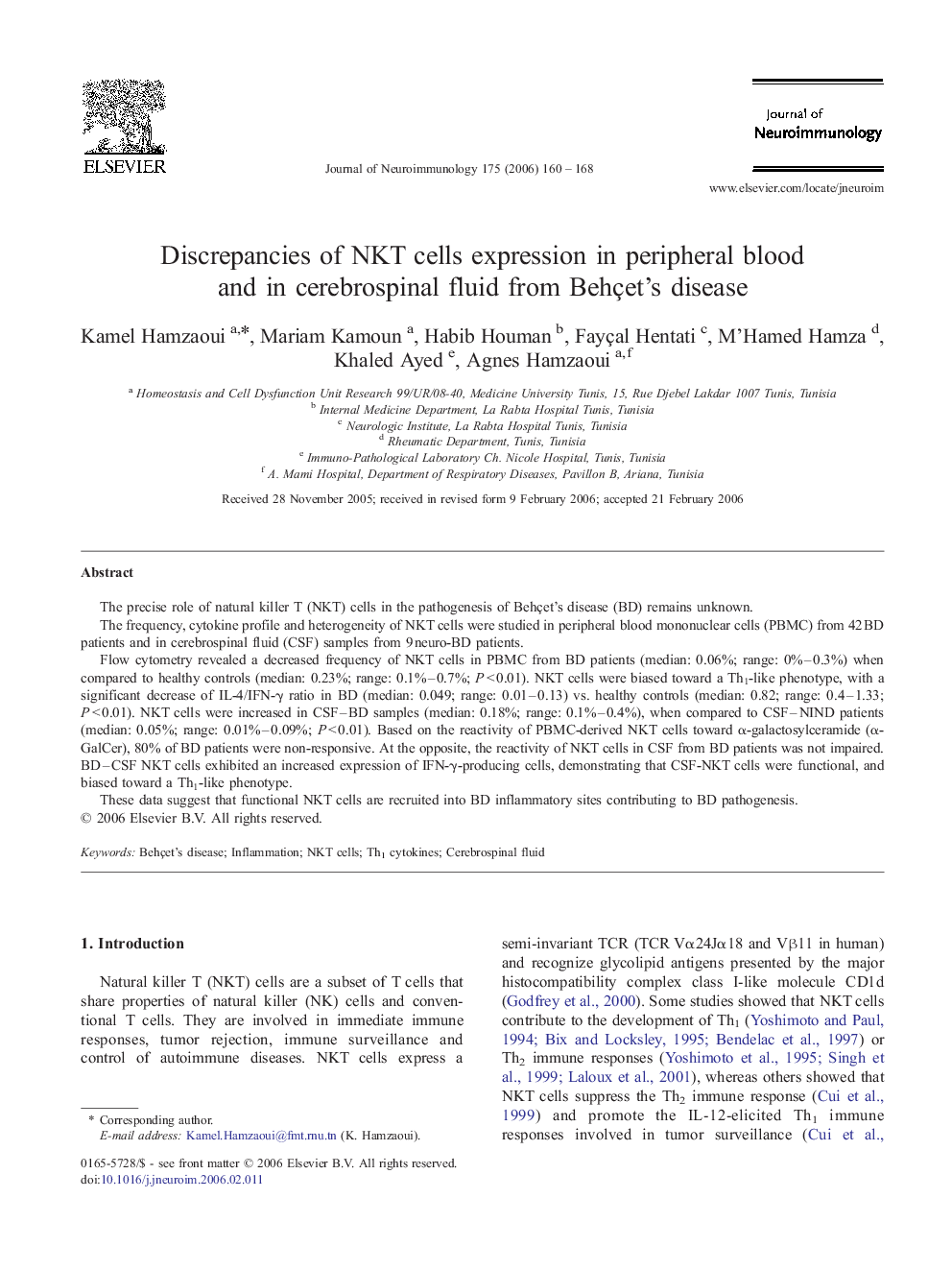| Article ID | Journal | Published Year | Pages | File Type |
|---|---|---|---|---|
| 3066118 | Journal of Neuroimmunology | 2006 | 9 Pages |
The precise role of natural killer T (NKT) cells in the pathogenesis of Behçet's disease (BD) remains unknown.The frequency, cytokine profile and heterogeneity of NKT cells were studied in peripheral blood mononuclear cells (PBMC) from 42 BD patients and in cerebrospinal fluid (CSF) samples from 9 neuro-BD patients.Flow cytometry revealed a decreased frequency of NKT cells in PBMC from BD patients (median: 0.06%; range: 0%–0.3%) when compared to healthy controls (median: 0.23%; range: 0.1%–0.7%; P < 0.01). NKT cells were biased toward a Th1-like phenotype, with a significant decrease of IL-4/IFN-γ ratio in BD (median: 0.049; range: 0.01–0.13) vs. healthy controls (median: 0.82; range: 0.4–1.33; P < 0.01). NKT cells were increased in CSF–BD samples (median: 0.18%; range: 0.1%–0.4%), when compared to CSF–NIND patients (median: 0.05%; range: 0.01%–0.09%; P < 0.01). Based on the reactivity of PBMC-derived NKT cells toward α-galactosylceramide (α-GalCer), 80% of BD patients were non-responsive. At the opposite, the reactivity of NKT cells in CSF from BD patients was not impaired. BD–CSF NKT cells exhibited an increased expression of IFN-γ-producing cells, demonstrating that CSF-NKT cells were functional, and biased toward a Th1-like phenotype.These data suggest that functional NKT cells are recruited into BD inflammatory sites contributing to BD pathogenesis.
